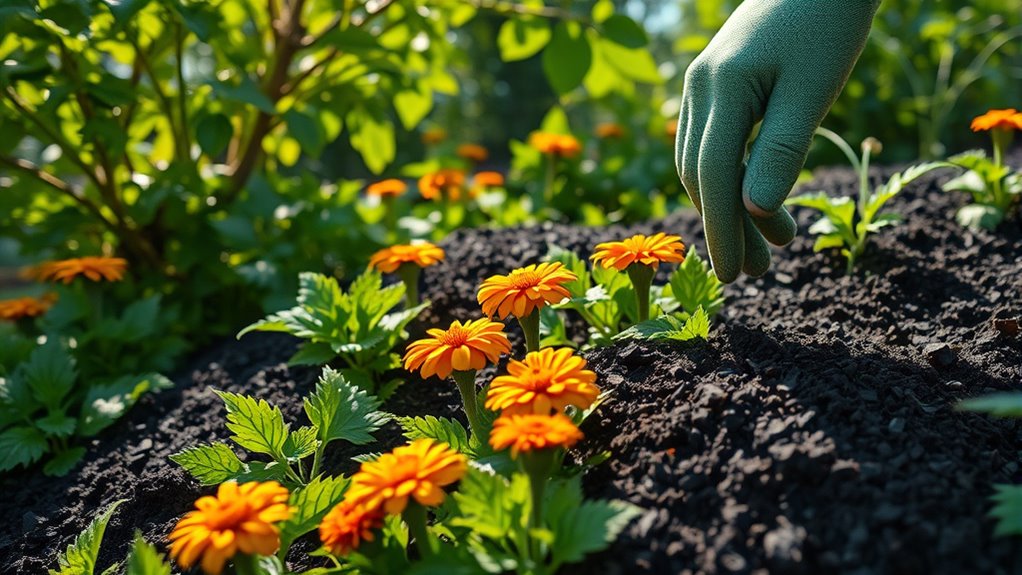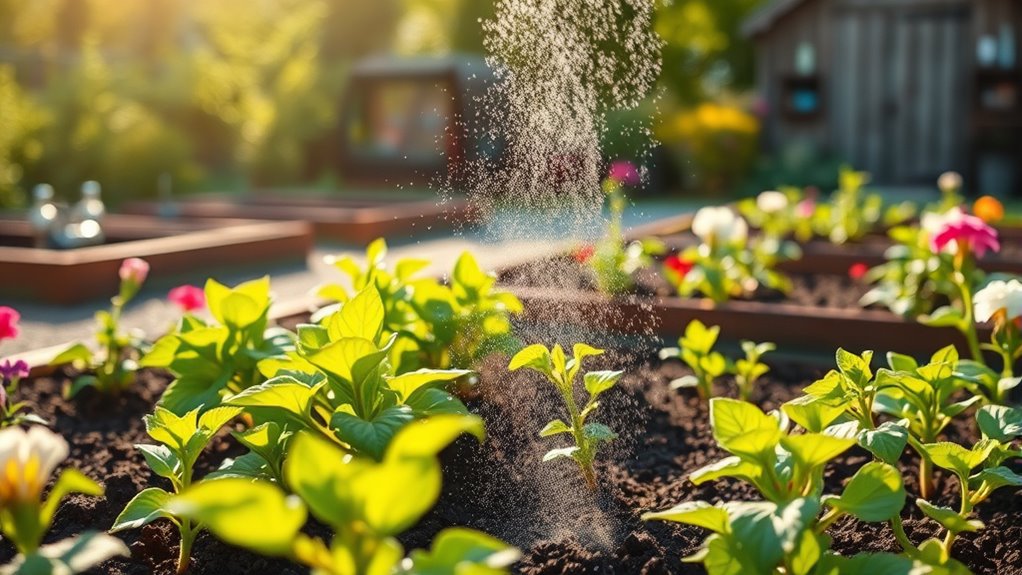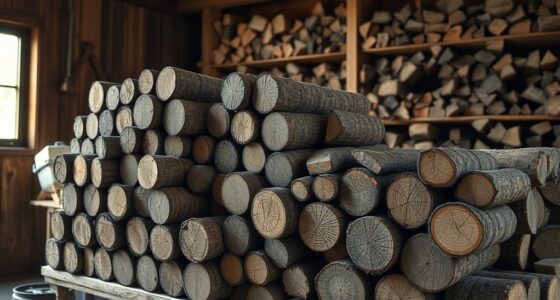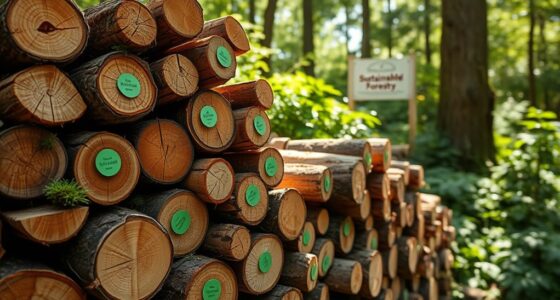Using wood ash responsibly in your garden can boost soil nutrients like potassium and calcium, improve soil pH, and help control pests naturally. However, overapplying ash risks making your soil too alkaline, which can harm your plants. To benefit most, test your soil first, apply ash in moderation, and combine it with proper watering practices. Keep an eye on soil pH to prevent problems—more details can help you maximize benefits and avoid risks.
Key Takeaways
- Test soil pH before applying ash to prevent excessive alkalinity and soil imbalance.
- Use ash in moderation to avoid harming plant health and maintain optimal soil conditions.
- Combine ash application with soil testing and proper watering for effective garden management.
- Utilize ash as part of an integrated pest management strategy to control pests safely.
- Understand soil chemistry principles to maximize benefits and minimize risks of ash use in gardening.

Have you ever considered using wood ash in your garden? It might seem unusual, but it can offer some surprising benefits when used responsibly. One of the main reasons gardeners turn to ash is for soil enrichment. Wood ash contains valuable nutrients like potassium, calcium, and magnesium, which are essential for healthy plant growth. When added appropriately, ash can help balance soil pH, especially in acidic soils, making it more suitable for a variety of plants. This natural amendment can improve soil structure, enhance nutrient availability, and promote vigorous growth. Additionally, understanding the scientific principles of soil chemistry can help gardeners apply ash more effectively. However, it’s vital to use ash carefully since overapplication can lead to soil becoming too alkaline, which might harm certain plants. Always test your soil’s pH before applying ash to avoid disrupting the delicate balance your garden needs. Applying ash in moderation and at the right time can maximize its benefits and minimize potential setbacks, especially when combined with soil testing and proper watering practices.
Beyond soil enrichment, ash can also serve as a form of pest control. Its abrasive and alkaline properties make it a useful, eco-friendly barrier against pests like slugs, snails, and certain insects. Sprinkling a thin layer of wood ash around your plants creates a physical barrier that pests find difficult to cross. It also dehydrates soft-bodied pests, discouraging them from damaging your crops without the need for chemical pesticides. This natural pest control method has gained popularity because it’s safe for beneficial insects and doesn’t leave harmful residues in your garden. Just keep in mind that ash isn’t a one-size-fits-all solution; it works best when combined with good gardening practices and integrated pest management strategies.
Frequently Asked Questions
Can Ash Be Used Directly on Edible Plants Safely?
You should avoid applying ash directly to edible plants without following proper guidelines. Ash can alter soil pH and contain contaminants, risking edible plant safety. Always adhere to ash application guidelines by applying sparingly and avoiding leaf contact. To protect your harvest, test soil pH beforehand and use ash as a soil amendment rather than a direct fertilizer. This approach guarantees safe, healthy growth for your edible plants.
How Often Should Ash Be Applied to Garden Soil?
You should apply ash to your garden soil as a light dusting every 6 to 12 months, like sprinkling sparkling magic onto your earth. This acts as a soil amendment, helping to boost potassium and calcium levels. However, be mindful of maintaining a nutrient balance; over-application can harm your plants. Use ash sparingly, and always test your soil to verify you’re supporting healthy, vibrant growth without risking nutrient imbalance.
Does Ash Attract Pests or Wildlife to the Garden?
Ash can attract wildlife and pests to your garden if used excessively, as it offers nutrients and a potential shelter. While a small amount may not cause issues, overapplication might lead to increased wildlife attraction and pest interactions. To prevent this, apply ash sparingly and monitor your garden regularly. This way, you enjoy the benefits without inviting unwanted animals or pests that could harm your plants.
Are There Legal Restrictions on Ash Disposal in Residential Areas?
Imagine a garden where your choices matter—yes, there are legal restrictions on ash disposal in residential areas. You must follow ash disposal regulations and residential ash laws that protect the environment and community. Ignoring these rules can lead to fines or environmental harm. Always check local guidelines before discarding ash, ensuring your gardening practices stay responsible and lawful, preserving the beauty and safety of your home landscape.
How Can I Test My Soil’s Ph Before Using Ash?
To test your soil’s pH before using ash, you should perform a soil testing or pH measurement. Start by collecting a soil sample from your garden at a few different spots and mix them for accuracy. Use a soil test kit or pH meter, following the instructions carefully. The pH measurement will tell you if your soil is acidic or alkaline, helping you decide if adding ash is suitable.
Conclusion
By using ash responsibly, you reveal nature’s secret weapon—balancing its power for good. Think of ash as a double-edged sword: when wielded wisely, it enriches your garden’s soil; used carelessly, it could harm your plants and the environment. Embrace this gift with respect and knowledge, and your garden will flourish like a well-tended symphony. Remember, in the dance of growth, it’s your mindful touch that transforms potential into beauty.










